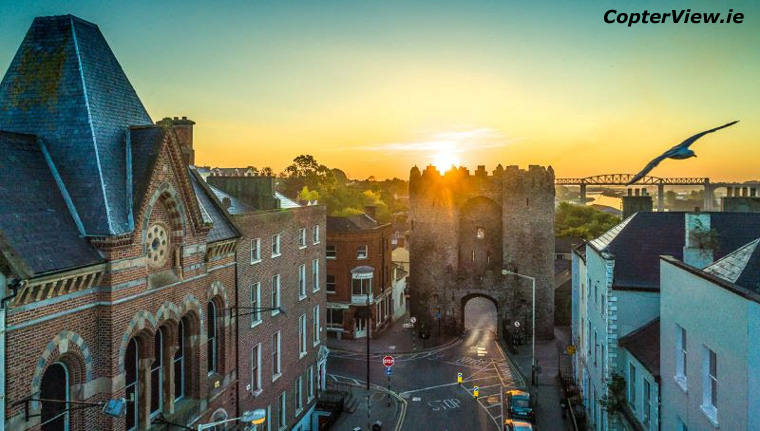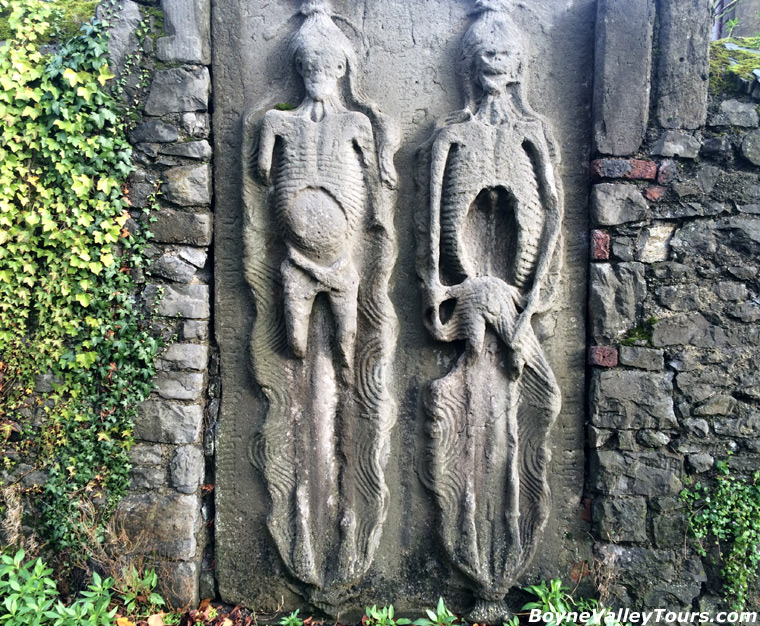Drogheda is a medieval gateway town to the Boyne Valley. The town's name in Irish is Droichead Atha
meaning 'Bridge of the Ford', a bridge over the river Boyne. Drogeda was a medieval walled town, only fragments of the wall
remain, St. Laurence's Gate led to the Hospital of St. Laurence.
Drogheda welcomes visitors with a blend of rich history, charming landscapes, and vibrant culture. Located in Ireland's Ancient East, this captivating town seamlessly weaves its medieval past into a modern tapestry, making it a must-visit destination for travelers seeking an authentic Irish experience.
For history enthusiasts, Drogheda boasts an impressive array of heritage sites, including the iconic St. Laurence's Gate, a medieval triumph that stands proudly as a testament to the town's architectural prowess. The Millmount Martello Tower, perched atop a scenic hill, offers panoramic views of the surrounding countryside and provides a glimpse into the town's military history.
Drogheda takes pride in its cultural scene, with vibrant festivals, live music, and theatrical performances showcasing the town's artistic spirit. The Highlanes Gallery, housed in a former Franciscan church, is a cultural hub where visitors can explore a collection of contemporary and historical art, bridging the gap between past and present.
Whether you're exploring its historical landmarks, indulging in the local cuisine, or simply enjoying the warm hospitality of its people, Drogheda invites visitors to uncover the layers of its fascinating story and create lasting memories in this charming Irish gem.
At the east end of the town, near St. Laurence's Gate, is the Protestant St. Peter's Church. This 19th century church occupies the original location of probably Drogheda's earliest religious site. In the graveyard can be seen the 16th century cadaver stone taken from the tomb of Sir Edmond Goldyng and his wife Elizabeth Fleming. These macabre tombs, depicting the body in a skeletal or decaying state, were made in the 16th and 17th century to remind people of mortality and the briefness of life.
Drogheda welcomes visitors with a blend of rich history, charming landscapes, and vibrant culture. Located in Ireland's Ancient East, this captivating town seamlessly weaves its medieval past into a modern tapestry, making it a must-visit destination for travelers seeking an authentic Irish experience.
For history enthusiasts, Drogheda boasts an impressive array of heritage sites, including the iconic St. Laurence's Gate, a medieval triumph that stands proudly as a testament to the town's architectural prowess. The Millmount Martello Tower, perched atop a scenic hill, offers panoramic views of the surrounding countryside and provides a glimpse into the town's military history.
Drogheda takes pride in its cultural scene, with vibrant festivals, live music, and theatrical performances showcasing the town's artistic spirit. The Highlanes Gallery, housed in a former Franciscan church, is a cultural hub where visitors can explore a collection of contemporary and historical art, bridging the gap between past and present.
Whether you're exploring its historical landmarks, indulging in the local cuisine, or simply enjoying the warm hospitality of its people, Drogheda invites visitors to uncover the layers of its fascinating story and create lasting memories in this charming Irish gem.
At the east end of the town, near St. Laurence's Gate, is the Protestant St. Peter's Church. This 19th century church occupies the original location of probably Drogheda's earliest religious site. In the graveyard can be seen the 16th century cadaver stone taken from the tomb of Sir Edmond Goldyng and his wife Elizabeth Fleming. These macabre tombs, depicting the body in a skeletal or decaying state, were made in the 16th and 17th century to remind people of mortality and the briefness of life.
Book a Private Day Tour
Boyne Valley Tours Privacy, Terms and Conditions
Boyne Valley Tours Privacy, Terms and Conditions
Home
| Private Driver Tour
| Cruise Excursion
| Places
| Ireland's Ancient East
| About Us
| FAQs
| Contact
| Newgrange
| Knowth
| Hill of Tara
| Monasterboice
| Trim Castle
| Mellifont Abbey
| Slane


